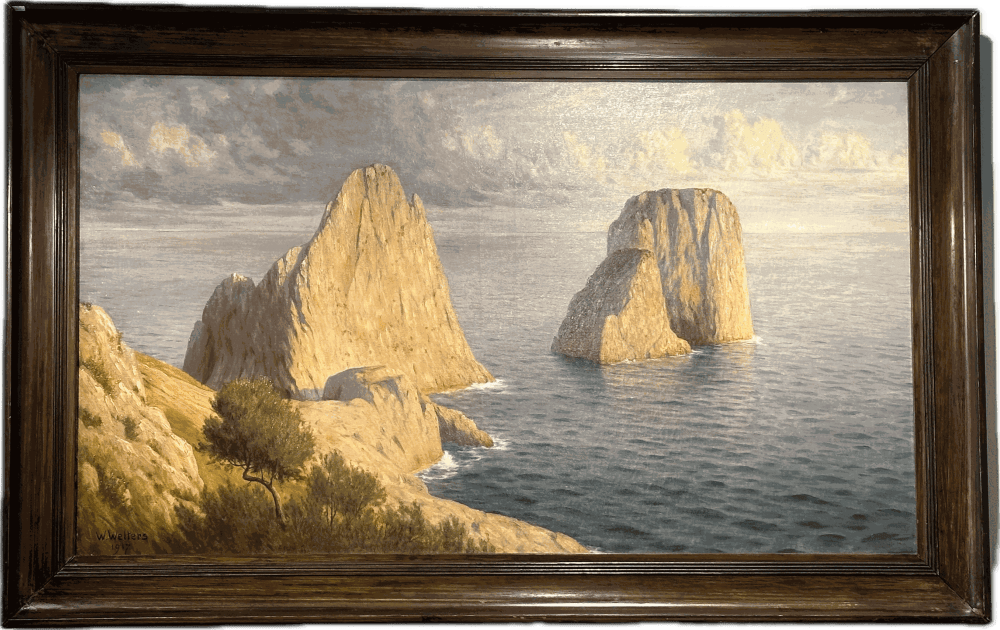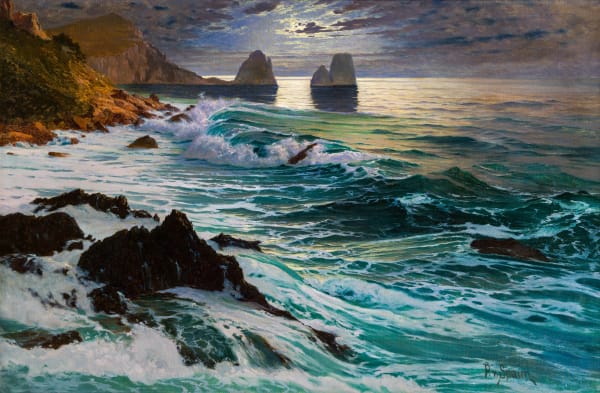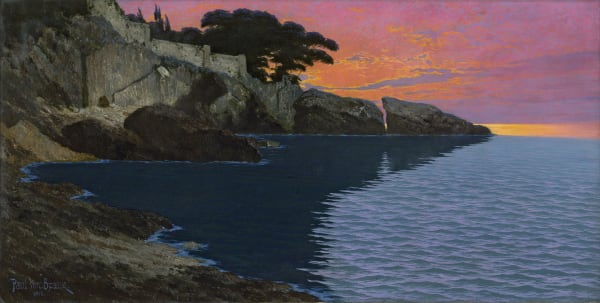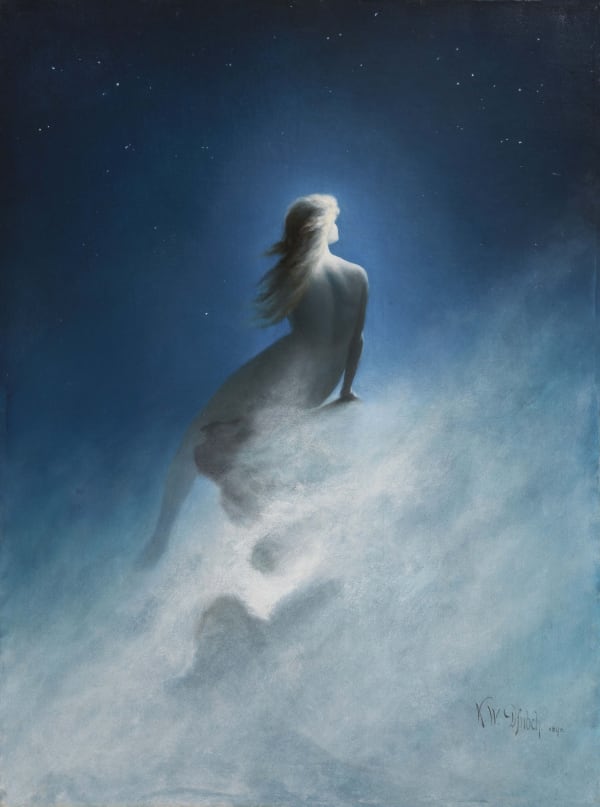

Willem WELTERS ROTTERDAM 1881-BORDIGHERA 1972
70 x 103 x 5 cm (with the frame)
Willem Welters after studying painting in Amsterdam and Berlin began a long journey to Italy fascinated by the beauty and sights of our country. He visited Venice, Florence and Rome, but around 1910 he decided to settle in Capri, where he worked for many years forging friendships with artists who frequented the island, including Antonio Leto, evolving and modifying his painting.
He arrived in Liguria in the mid-1930s and, after a brief stay on the Riviera di Levante, settled in San Remo.
His painting was mainly oriented toward landscapes, and his works were greatly appreciated by the aristocratic and bourgeois tourism that stayed in both Capri and San Remo. Endowed with remarkable technical skill, sometimes bordering on virtuosity certainly derived from his Dutch training, he skillfully combined the chromatic tones and luminous characteristics of the purely Neapolitan school.
-
 Paul VON SPAUNView of the Faraglioni in Capri
Paul VON SPAUNView of the Faraglioni in Capri -
 Paul VON SPAUNCapri at Sunset, 1911
Paul VON SPAUNCapri at Sunset, 1911 -
 KARL WILLHELM DIEFENBACHQuestion to the Stars, 1898
KARL WILLHELM DIEFENBACHQuestion to the Stars, 1898 -
 WILLEM WELTERSView of Monte Solaro in Capri, c. 1915
WILLEM WELTERSView of Monte Solaro in Capri, c. 1915 -
 KARL WILLHELM DIEFENBACHTiberius’ villa on Capri, 1910 c.
KARL WILLHELM DIEFENBACHTiberius’ villa on Capri, 1910 c. -
 KARL WILLHELM DIEFENBACHSeagull flying over the remains of Villa Jovis in the moonlight, 1901
KARL WILLHELM DIEFENBACHSeagull flying over the remains of Villa Jovis in the moonlight, 1901
Join the mailing list
Subscribe to our newsletter to receive all the news about exhibitions, fairs and new acquisitions!





